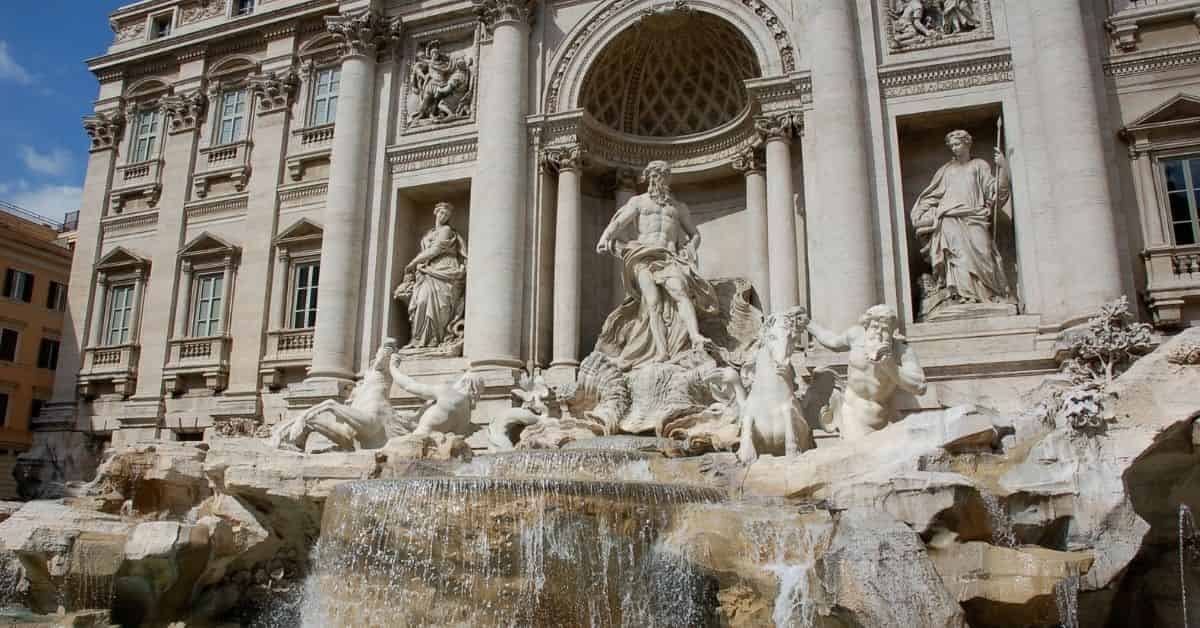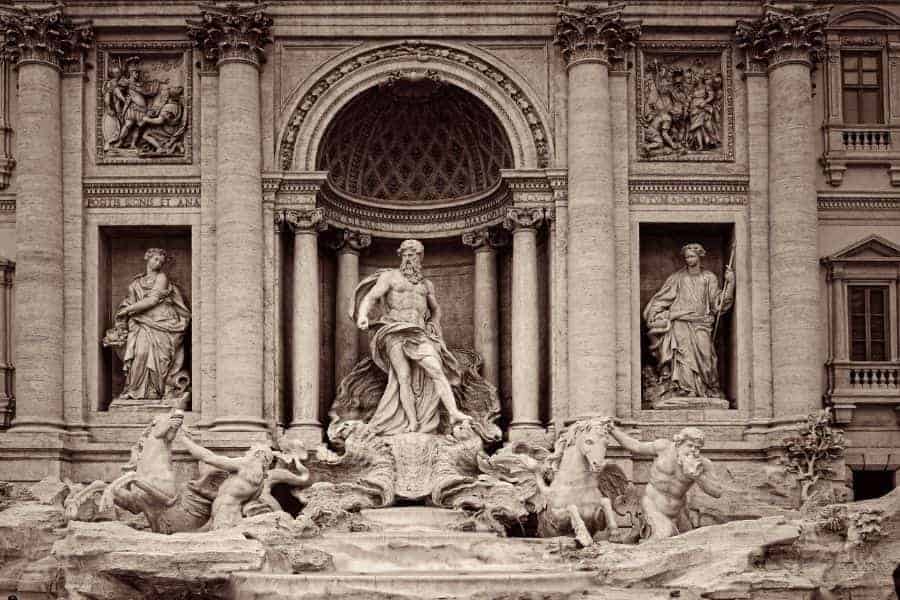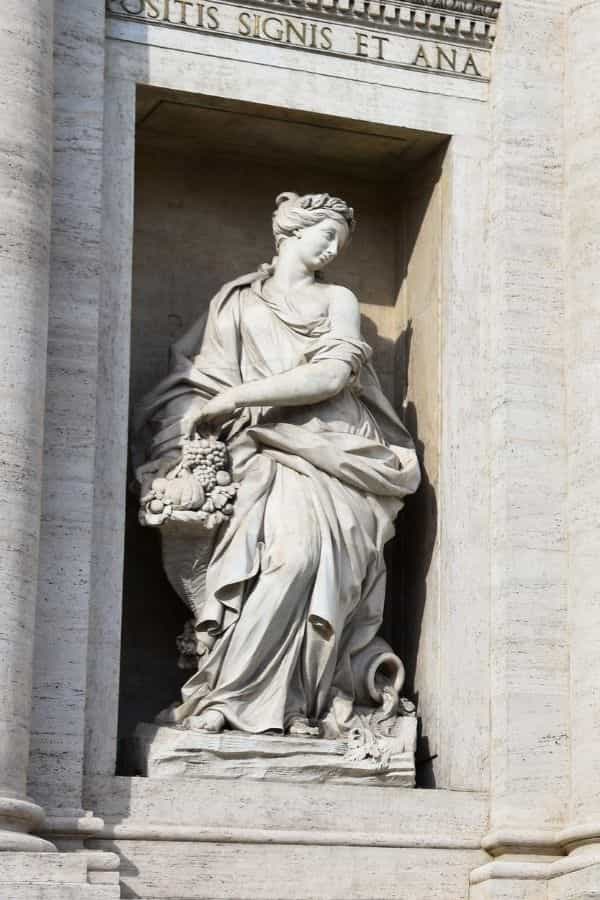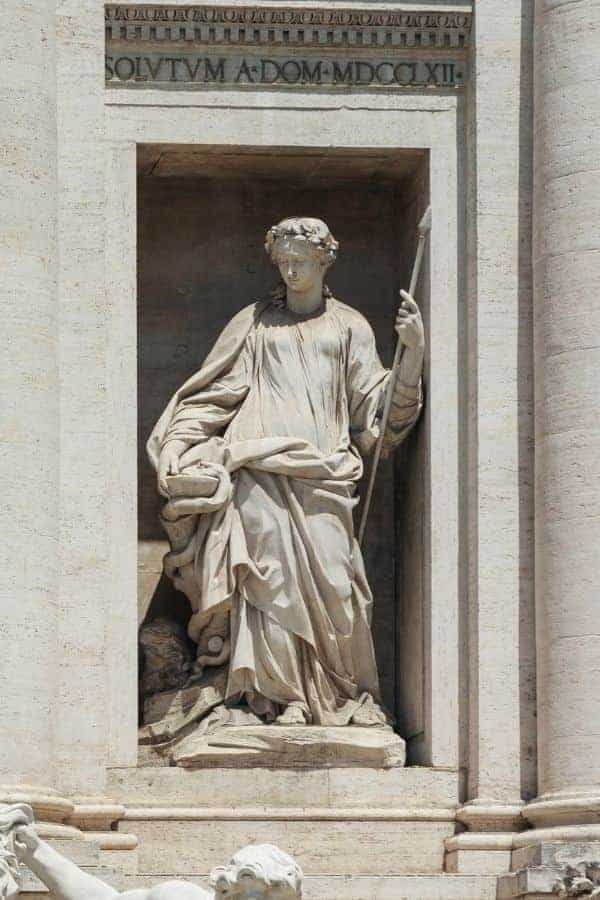You can’t visit Rome without seeing Trevi Fountain, one of the city’s most iconic landmarks. Located in the Quirinale district, it is the largest fountain in Rome and probably the most recognizable fountain in the world. If you are planning a trip to Rome, make sure you visit it and read on to learn about what makes this fountain such a masterpiece!

Everything You Ever Wanted to Know about Trevi Fountain in Rome
History of Trevi Fountain
Trevi fountain is named based on its location (where three streets meet). Its placement in the city is no accident. It was built at the end point of an ancient Roman aqueduct.

In 1629, Pope Urban VIII made the decision to redesign the fountain to make it a more dramatic landmark in Rome. He enlisted Bernini to come up with the design but when Urban died, the project was left unfinished.
A century later, Pope Clement XII promoted a contest to redesign the fountain and when a non-Roman won the contest outraging the locals, the Pope granted the job to a Roman architect named Salvi who was in second place.
It is Salvi who created the theme “Taming of the Waters” and brought in the Carrera Marble and Travertine to create the facade.
When Salvi died prior to the fountains completion, it was Giuseppe Pannini who completed the project in 1762.

Design of Trevi Fountain
The fountain’s design was well thought out and like all significant art pieces of Ancient Rome, tells a story to reflect the time.
As stated, Salvi came up with the theme “Taming of the Waters,” which features Oceanus (God of the Ocean) riding in a chariot as Abundance and Salubrity gaze on from behind.

Oceanus’ chariot is being pulled by two sea horses, one calm & the other, wild. This symbolizes the sea; at times peaceful and at other times, turbulent.

Abundance stands over one shoulder in an alcove holding a cornucopia with a vase that has fallen at her feet.

Salubrity wears a laurel crown and holds a cup from which a snake is drinking.
Above each is a relief that features scenes showing the ancient history of the aqueduct: one of Agrippa commanding the building of the aqueduct and the other featuring the story of a woman leading Roman soldiers to drink from the water.
The four statues at the top of the fountain facade, represent the four seasons of harvest.

The Tradition of Throwing Coins in the Fountain
When you visit Trevi Fountain, one tradition you should take part in is throwing a coin into the fountain.
Legend has it that if you throw a coin over your left shoulder (using your right hand), then you will return to Rome again in your lifetime! The tradition of throwing coins into the fountain dates back to Ancient Rome when Romans would throw coins into the water as an offering to gods to protect them on their journey.
You may see some people throwing more than one coin.
If you throw a second coin, it is said you will fall in love, and the third coin is for the joy of marriage.

What Happens to the Coins Thrown in Trevi Fountain?
Nearly €3,000 of coins are thrown into the fountain daily! The coins are collected every night and donated to the Italian charity Caritas Roma. Caritas Roma uses the money to fund soup kitchens, shelters, and other efforts that positively impact Rome’s poverty-stricken communities.
Frequently Asked Questions about Trevi Fountain
The Fountain is open 24 hours a day!
No, you can visit Trevi Fountain any day and any time of day that is convenient for you.
Trevi Fountain is a popular attraction and can be busy throughout the day. The earlier you go, the better chance that you will have of getting a photo in front without others in your picture.
You will find many attractions within walking distance of Rome’s famous fountain. Some of the most popular are the Spanish Steps and Pantheon.
Hoping to see more famous fountains in Rome? There are plenty that you will want to check out!
Have you been to Trevi Fountain in Rome? Did you toss a coin in?
